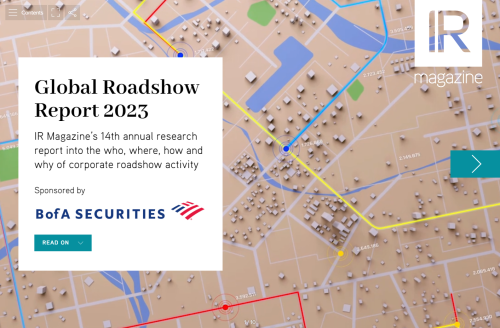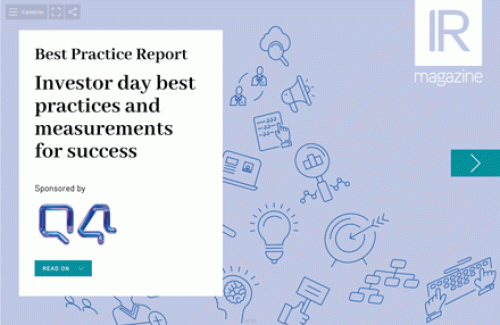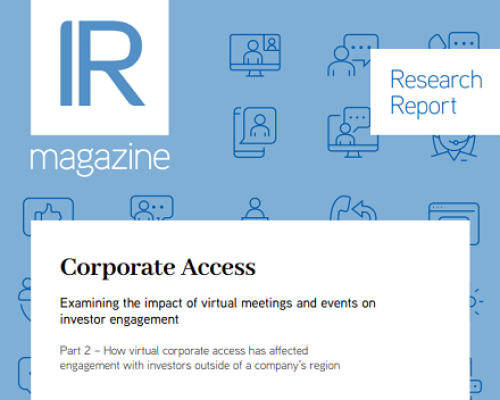Earlier this month, Magnitogorsk Iron & Steel Works (MMK) opted for a hybrid format for its capital markets day. The Russian steel company invited a handful of investors and analysts to the two-hour event, while enhancing the online experience for those who couldn’t attend. With many IR teams considering their own hybrid investor days, IR Magazine caught up with Veronika Kryachko, director of investor relations at MMK, to get the thinking behind the event.
Who did you invite to the event?
Last year was the first time we did a fully online capital markets day. This year we decided to expand the format. Despite the fact that the Covid situation has not yet stabilized, we decided to invite some viewers to be there in person so we invited 10 people: five sell-side analysts and five representatives of local investment funds.
We were not able to invite foreign funds and analysts because of the travel restrictions between countries so only local funds had the chance to participate. But it was good that they agreed and were very eager to participate.
What health precautions did you take around the event?
Last year and this year we did express tests for everyone who was at the location. This year we also asked everyone to bring a QR code proving their vaccination status. People who hadn’t been vaccinated needed to do a PCR test before coming.
How did you try to create a valuable experience for all attendees, whether in person or virtual?
We wanted to make it as interesting to view online as live so we had a director of the capital markets day as well as producers and filmmakers. We didn’t have a webcast where you only see the head of the person who is talking. Instead, the film crew did dramatic shots of people asking questions. The idea was to create something like a cross between a capital markets day and a reality TV show.
Often when people watch things online they try to do other tasks at the same time. I wanted to make the day as interesting as possible so people would enjoy the performance and not be distracted by something else.
Another point was not to spend too much time on presentations. We allocated 40 percent of the time to presentations and 60 percent to Q&A. We had a lot of questions from the audience, and it was really interesting to see the top managers give their answers live. The website was also enhanced to make it more useful for viewers.
What role did IR play?
IR was the project owner of this event so we managed everything from deciding where to hold the event to creating the content, inviting people and urging colleagues to prepare specific information.
What were some of the biggest challenges?
Preparing the presentation and materials was the hardest part. Also preparing a video on the company’s values – who we are and what we exist for – that appeared at the beginning of the event. We had not produced a video before about the company’s values so we spent more time on this.
How else did you incorporate video?
We included other videos on capital investment projects. One was about a new coke oven battery and the other focused on the Cold Rolling Mill 1700, which was put into operation in July. Only a small number of local investors and analysts have had the chance to do a site visit with MMK this year so we wanted to show our key projects.
Do you plan to use the investor day content for other communications?
We would definitely like to distribute the video on the company’s vision. Actually, this video was built on ideas from our annual report, which was titled ‘The power of steel’. We wanted to enhance this idea about the power of steel further through video. And the videos on key projects will continue to explain the investments we are doing. The videos will be present on our YouTube page, so anyone can go, anytime, to explore the company.
How has the audience evolved for your capital markets days?
Previously, institutional investors and sell-side analysts were the key people watching. But now there are increasing numbers of retail investors taking part. Retail investors are very different in the way they think and ask questions about the company. We need to offer them something more user-friendly as they are not professional investors.
The whole event took place live. What do you think about using live versus pre-recorded sessions?
I think doing the event live adds some extra true feeling for people who are viewing it. They know it is being streamed online right now and can feel they are part of the process. You can ask a question and it gets translated simultaneously to the speakers. This has a special feeling – at least that’s the way I see it. It can help build a connection between all the stakeholders of the company.










